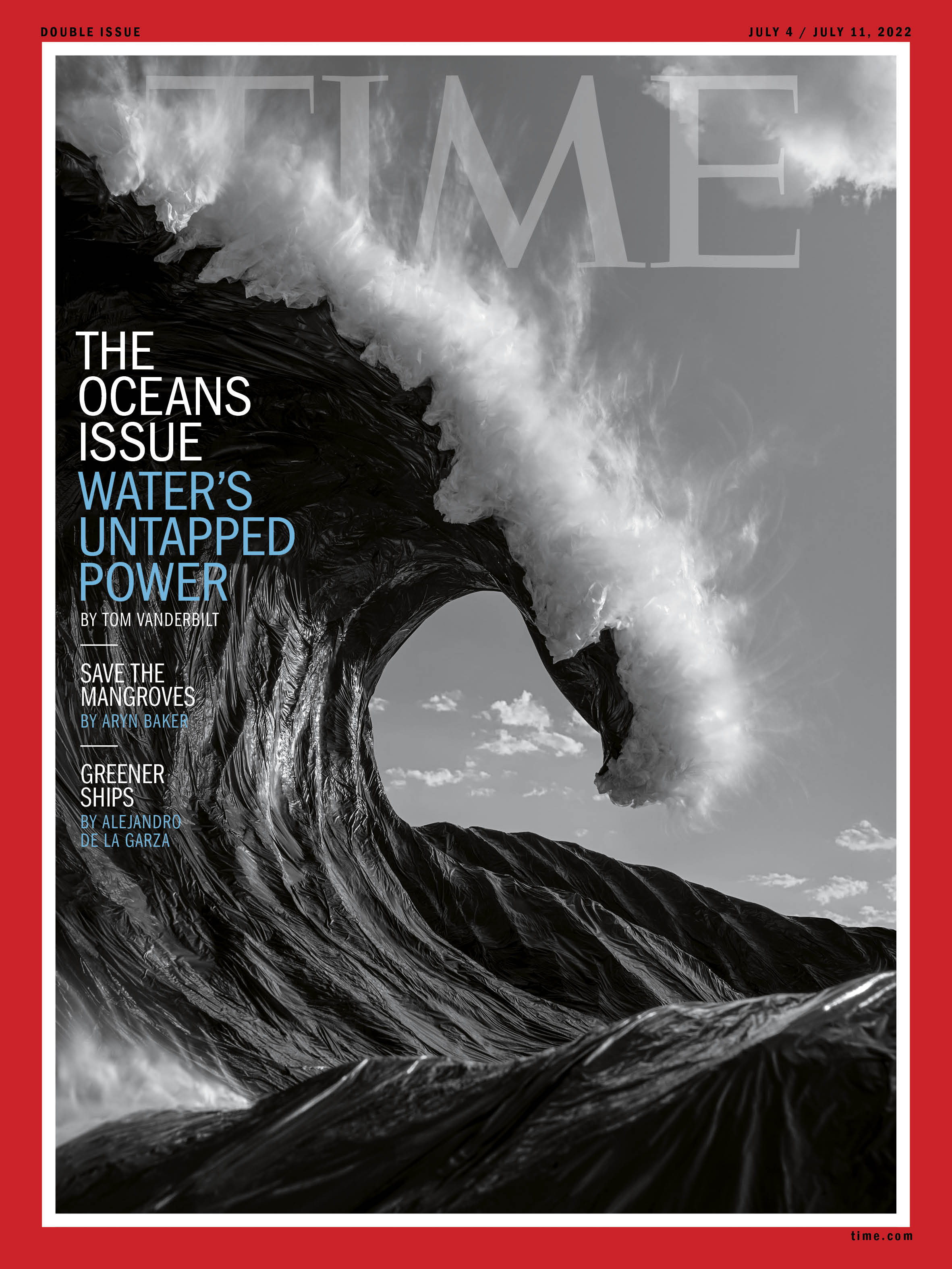
TIME has covered the planet and the dramatic damage done to it by human beings for more than a half century. With the rise of modern environmentalism came a double-width foldout on water use in 1965 and, two years later, a cover photograph of polluted air over L.A.
Our most famous such cover literally covered the planet. The conceptual artist Christo wrapped a 16-in. globe in polyethylene and rope and drove more than 350 miles up and down New York State’s Long Island in search of the perfect combination of light, air, and sea to create the image TIME used to announce that 1988 would not have a Person of the Year, but rather a Planet of the Year.
I had the opportunity to meet with Christo in his New York City studio three years ago, along with TIME editor-in-chief Edward Felsenthal and executive editor Ben Goldberger. Sitting with him in a large, spare room adorned with diagrams showing his decades-in-the-making plan to wrap the Arc de Triomphe in Paris, I was struck by the boldness of Christo’s creativity and vision. He was thoughtful and confident, approaching creative challenges with a “Why not!” He died less than a year later—before the new collaborations we discussed could become reality, and months before his team completed his dream of wrapping the arch in recyclable polypropylene fabric.

There’s no cover subject more important than climate change—and no single solution will cure the planet. Likewise, when approaching the visuals for a climate cover story, as TIME’s creative director I believe it’s important to present a variety of approaches, from large-scale sculptures to dramatic installations.
For the April 26, 2021, cover, Malaysian artist Red Hong Yi spent two weeks creating an image that was part sculpture, part performance art. She constructed a 7.5-by-10-ft. world map out of 50,000 green-tipped matchsticks and then set the work on fire—no part of the globe escaped.
And in 2019, Japanese sand sculptor Toshihiko Hosaka and his seven-person team created a 98-by-65-ft. TIME cover on the playground site of the former Iioka Junior High School in Iioka, Asahi, which closed after the East Japan Earthquake in 2011. Their process involved raking sand for eight hours a day for seven days, followed by two days of fine adjustments. The piece was then photographed by drone.

Buy a print of The Oceans Issue here
This week, we return to the ocean with a special package of stories examining the peril facing our seas—which also hold the potential to make a difference in the fight against a warming atmosphere. Our cover features another sculpture that reimagines the combination of light, air, and sea. California photographer Hugh Kretschmer spent four weeks constructing a 5-ft.-wide wave sculpture made of recycled plastic garbage bags.
“I share a special kinship with the ocean—it is one of a handful of places I go to regroup, reset, refresh, and replenish,” says Kretschmer, who drew inspiration from Robert Longo’s charcoal drawing from his Epic Wave series. “Blue is also the color of creativity, and many ideas of mine are born while walking the shores.”

He built Plastic Waves using pillow batting, aluminum screening, spackle, and garbage bags, which were laminated and heated onto the surface. The last and most time-consuming step was adding the wave’s foam and spray using translucent garbage bags in varied thicknesses.
“The oceans are so vital to our ecosystem that we must take notice and protect them,” adds Kretschmer. “Unfortunately, it seems that what’s out of sight is out of mind. It’s below the surface that the real tragedies are happening.”
Read More from The Oceans Issue
The Ocean Is Climate Change’s First Victim and Last Resort
We’re Gonna Need a Greener Boat
The Motion of the Ocean Could Be the Next Big Source of Green Energy
The Miraculous Trees That Could Save Pakistan’s Largest City from Climate Disaster
More Must-Reads from TIME
- Cybersecurity Experts Are Sounding the Alarm on DOGE
- Meet the 2025 Women of the Year
- The Harsh Truth About Disability Inclusion
- Why Do More Young Adults Have Cancer?
- Colman Domingo Leads With Radical Love
- How to Get Better at Doing Things Alone
- Michelle Zauner Stares Down the Darkness
Contact us at letters@time.com